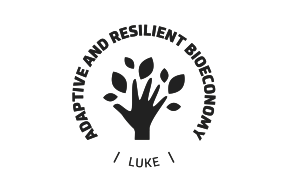“More wolf-related news during winter” and other things we have learned from the media monitor
We have published a monthly review of wolf-related news in social media channels. Now, researchers explain why they follow different news services and what they have learned.

Jani Pellikka, senior scientist at Luke, why are you following wolf-related news in this project?
The publicity of wolves has been wild during the 2010s, and debate has been fierce. The situation is tense, and people’s fears of large carnivores seem to be increasing. We want to know what is going on in the media. What kinds of messages raise a lot of attention? What is the news rhythm like?
Monitoring the general atmosphere is also important for the LIFE BorealWOLF project. We are monitoring the impact of the project by analysing how project-related communication can be seen in public debate and how it affects it.
We do not have any strong preconceived claims or assumptions that we would then test using the news data we have analysed. Our aim is to see and learn what this media field is like. As the media monitor has collected masses of data for analysis, we are very open to research cooperation.
Tuomas Nummelin, research scientist and development manager, how does the media monitor work?
We are focusing on news media and discussion forums, but not on social media. Our partner produces a news stream for us based on hits when using specific search words.
In the future, the media monitor will independently and objectively classify wolf-related news per theme. Possible themes include population estimates and wolf-induced losses. We are eager to see what kinds of news items AI considers to be similar. There is still a limited amount of data, and the algorithm of the media monitor is not yet capable of complicated analyses.
We want to develop the media monitor so that different emotions, values, attitudes and wolf-related conceptions can be identified from words used in news. The media monitor chops news into pieces and analyses what kinds of words and expressions have been used. It focuses on the generality of words or, for example, the type of adjectives used.
A year from now, we will be much farther ahead both in terms of the amount of data and the development of the media monitor.
Tuomas and Jani, what have we learned so far?
In just a year, the media monitor has identified from 5,500 to 6,000 news items, some 2,500 of which have dealt with wild wolves in Finland and resulting social debate. The remaining 3,000 to 3,500 news items have included names of sports clubs, scout troops and bands, last names of people and place names.
The first year has shown us how the word “wolf” is part of various linguistic expressions and what symbolic and cultural connotations it has in Finland. Wolves appear as fictional characters in films, books and song lyrics, as well as in media services that present them. In addition to wolf-related words, wolves can be seen in coats of arms and in idiomatic Finnish expressions and phrases, such as “olla susi syntyessään”, meaning that the quality of something was bad from the start, “sudenkuoppa”, meaning a pitfall, and “mennä hukkaan”, meaning go to waste.
For example, news of a fictional Hollywood film, in which the protagonist meets a bloodthirsty wolf, which then immediately bonds with the human, is not relevant considering our study. This piece of news hardly aims to represent the beliefs of filmmakers of what wolves are really like or use ways of fiction to discuss wild animals and their protection or population management. It is more difficult to draw the line when news deals with wolves in zoos.
When processing this massive amount of news material, we have built guiding rules to define what news items present wild wolves as animals or from a societal perspective. The clearest examples include news of population estimates, wolf-induced losses, wolf findings and wolf hunting or population management.
During this year, we have realised that the content of wolf-related news changes depending on the time of the year. All news media, in which wolves make the headlines, follow this annual rhythm. Wolf-related news items increase during winter, when wolf tracks can be seen better in the snow.
When we have monitored news hits, we have increasingly noticed that an identical or nearly identical news item is released almost simultaneously in different media services. At least a partial reason for this is that identical news items are released in several newspapers owned by a single media group. The centralised media field and the fast pace of news publication seem to increase the visibility of wolf findings, at least temporarily – also for findings that later turn out to be inaccurate.



